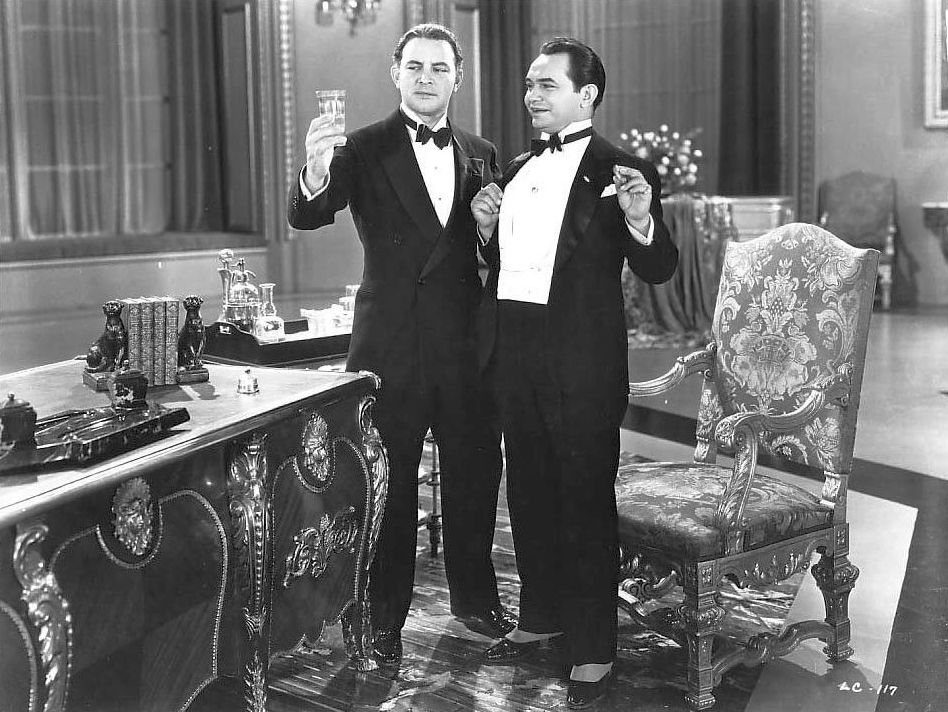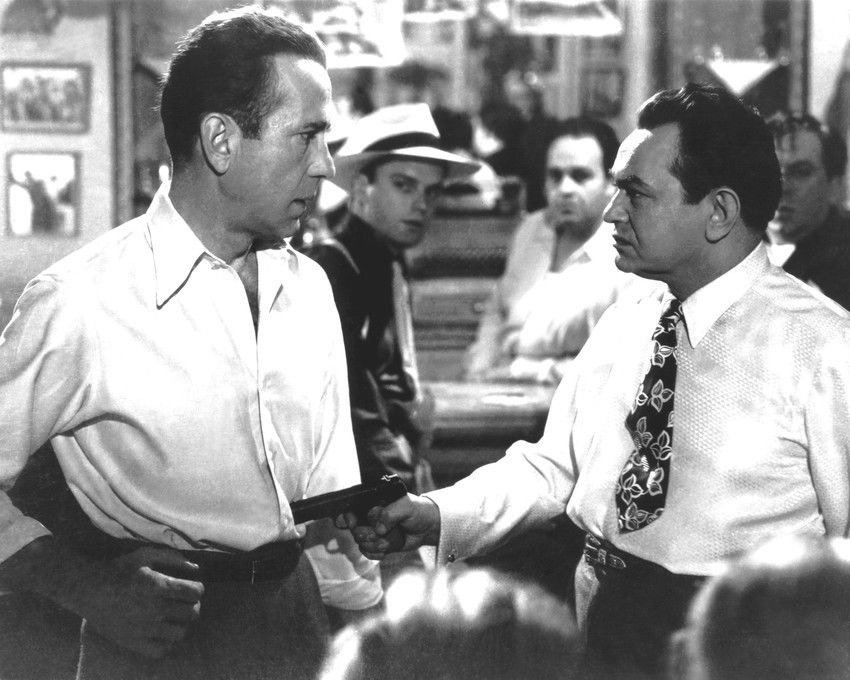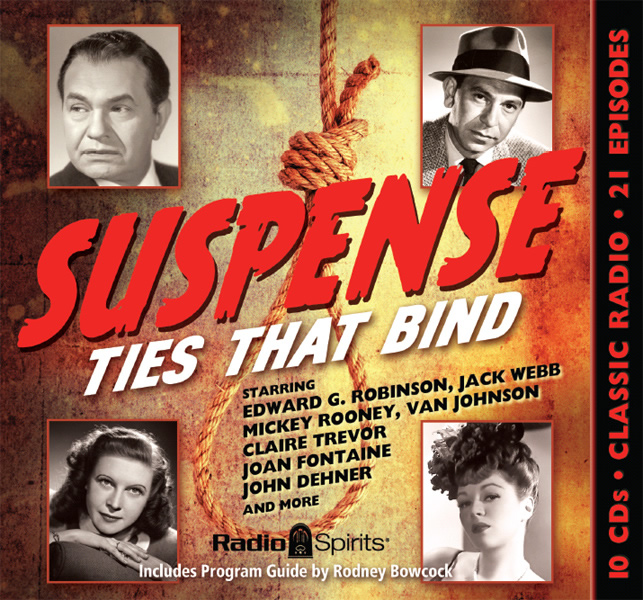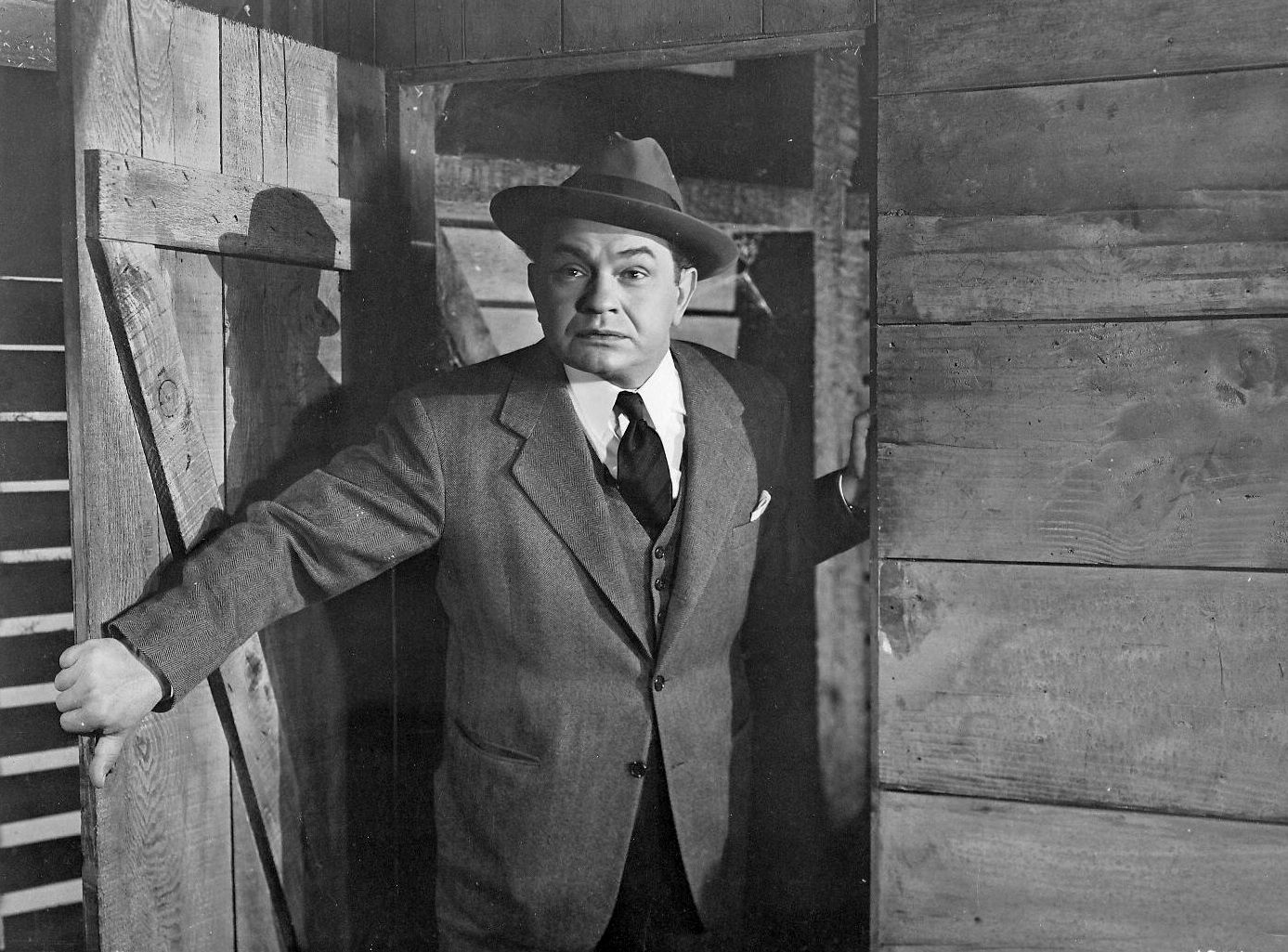Happy Birthday, Edward G. Robinson!
Posted by Ivan G. Shreve, Jr. on Dec 12th 2015
To start off our birthday tribute today…a bit of trivia: the “G” in actor Edward G. Robinson’s name stands for “Goldenberg”—for Eddie G. was born Emanuel Goldenberg in Bucharest, Romania one hundred and twenty-two years ago on this date in 1893. As Edward G. Robinson, the actor conquered stage, screen, and radio—becoming one of the movies’ most easily recognized actors despite not having the handsome good looks (or tall stature—Robinson stood 5’7”) of most leading men. “Some people have youth; some have beauty,” he once observed. “I have menace.” And Eddie G. put it to good use, particularly when it came to tackling gangster roles in such films as Little Caesar (1931) and Smart Money (1931). Despite the respect he received from his peers in the industry as a solid thespian…Edward G. Robinson was never nominated for a competitive acting Oscar for any of the 101 films he appeared in during his fifty-year career.
The decision of the Goldenberg family to emigrate to New York City in 1903 was purportedly prompted by one of Eddie’s brothers being attacked in their native country by an anti-Semitic mob. Once arrived on these shores, Robinson grew up on the Lower East Side, attending school at Townsend Harris High School and later moving on to the City College of New York. A scholarship to the prestigious American Academy of Dramatic Arts followed, after Eddie expressed an interest in acting. It was there that Emanuel Goldenberg became Edward G. Robinson. After a brief stint performing in the Yiddish Theatre District in 1913, he landed his first part in a Broadway production two years later.
It is not generally known that Eddie G.’s lengthy movie career predated the “talkies”; he had a small showcase as a factory worker in Arms and the Woman (1916), and in 1923 was billed as “E.G. Robinson” in The Empty Shawl. Robinson’s Broadway turn as a gangster in The Racket (1927)—later brought to the big screen in 1928—earned him the success necessary to begin appearing in movies on a regular basis. His stage background was also a plus, since the studios were looking for thespians with good speaking voices. Robinson’s movie resume included vehicles such as The Hole in the Wall (1929) and Outside the Law (1930), but it was his performance as Caesar Enrico “Rico” Bandello in the classic Little Caesar—with his legendary death scene of “Mother of mercy…is this the end of Rico?”—that really cemented his prominence among the moviegoing public. Eddie G. wasn’t as typecast as James Cagney when it came to gangsters—though the two actors did appear in a film together (Smart Money)—but Robinson did play his share of “tough guys” in such movies as Five Star Final (1931), Barbary Coast (1935), and The Last Gangster (1937). For a little variety, Robinson also acted tough in lighter fare like The Little Giant (1933—which sends-up his “Little Caesar” image) and the hilarious A Slight Case of Murder (1938).

At the same time, Edward G. Robinson made inroads in front of the radio mike with appearances on such programs as The Lux Radio Theatre and The Jack Benny Program. His decision to headline Big Town, a newspaper drama that premiered over CBS Radio on October 19, 1937, might have been motivated by his intention to demonstrate his acting range could extend beyond gangsters and bad guys (though in the early broadcasts, his character was a bit of a louse). On Big Town, Robinson played crusading Steve Wilson of The Illustrated Press, whose lofty position of managing editor allowed him to go toe-to-toe against the gangsters and racketeers of the underworld. Wilson was aided and abetted by gossip columnist Lorelei Kilbourne—played by Claire Trevor—who served as the editor’s sidekick and occasional love interest. Having two stars of Robinson and Trevor’s stature soon catapulted Big Town towards the top of the radio ratings…though Trevor would eventually lose interest in what she thought was a thankless role and she turned things over to Ona Munson in 1940. Robinson took an active hand in shaping the scripts for the series (taboo topics like racial prejudice were addressed on occasion), but when it was announced that Big Town was moving East to New York in 1942 Eddie G. handed the Steve Wilson role off to Edward J. Pawley as the program continued to be heard over CBS and NBC from 1943 to 1952.
Radio gave Edward G. Robinson much exposure as he frequently performed adaptations of his film hits like The Amazing Doctor Clitterhouse (1938), Manpower (1941), The Sea Wolf (1941), and The Woman in the Window (1944) on The Gulf Screen Theatre, The Lux Radio Theatre, and Screen Director’s Playhouse. Robinson also made the rounds on such programs as The Cavalcade of America, Family Theatre, The Harold Lloyd Comedy Theatre, The Theatre Guild of the Air, and Theatre of Romance. In addition, he appeared alongside such radio celebrities as Al Jolson, Amos ‘n’ Andy (Freeman Gosden and Charles Correll), Bob Hope, Dorothy Lamour, Eddie Cantor, Fred Allen, Jack Benny, and Victor Borge (more likely than not goofing on his “tough guy” image).

By the mid-1940s, Eddie G.’s age started to dictate that he move toward “character” roles. One of his most successful was wily investigator Barton Keyes—the man who suspects Fred MacMurray and Barbara Stanwyck are up to no good in the film noir classic Double Indemnity (1944). Robinson would briefly revive his gangster image in one of his superior screen turns as Johnny Rocco in Humphrey Bogart’s Key Largo (1948). When the pair had appeared together in such early 1930s Warner Bros. vehicles as Bullets or Ballots (1936) and Kid Galahad (1937), Bogie usually wound up dead by the time the closing credits rolled. But in Largo, Bogart finally got the upper hand on Robinson, shooting him down in the movie’s memorable climax. (Largo also brought back his former Big Town co-star Claire Trevor as Robinson’s moll, and her performance netted her a Best Supporting Actor Oscar.)
For a time in the late 1940s and through the early 1950s, Edward G. Robinson often found difficulty finding work in films. He didn’t completely disappear from the screen, but the many times he was called before the House Un-American Activities Committee to answer for supposed “subversive” political views made him a bit radioactive in Hollywood. His memorable appearance in Cecil B. DeMille’s 1956 remake of his earlier The Ten Commandments provided just the boost for Robinson’s stalled career. Eddie soon began to grace such hits as A Hole in the Head (1959), Seven Thieves (1960), The Cincinnati Kid (1965) and his final feature film, Soylent Green (1973). Edward G. Robinson died twelve days after finishing his final scene in Green, and two months later he received the long-due recognition of his industry peers with a posthumous Honorary Academy Award.

It probably won’t come as a surprise that Edward G. Robinson was, in real life, the complete opposite of his “tough guy” film persona: a cultured, sophisticated individual with a passion for art (at the time of his death, his personal collection of rare treasures was estimated at $2,500,000). Radio Spirits invites you to check out one of Robinson’s atypical movie roles in The Red House (1947), a nifty suspense thriller that’s available on the DVD set Danger, Death & Dames: Film and TV Crime Dramas. Eddie is also one of several celebrities who appear in the World War II tribute DVD Bob Hope: Entertaining the Troops, and to get a feel for just how powerful Mr. Robinson could be in front of a radio microphone, our Suspense: Ties That Bind collection spotlights one of the actor’s most beloved turns on “radio’s outstanding theatre of thrills.” In “The Man Who Thought He Was Edward G. Robinson” (10/17/46), the titular performer plays a milquetoast who’s anxious to do away with his wife…so he asks the toughest guy he knows for advice on how to accomplish the deed! (The broadcast was so popular that Suspense did an encore performance of the play on September 30, 1948, with Robinson reprising his dual roles.) And keep your eye out in the coming weeks for a new collection of Big Town episodes, starring Robinson as newspaper editor Steve Wilson.

